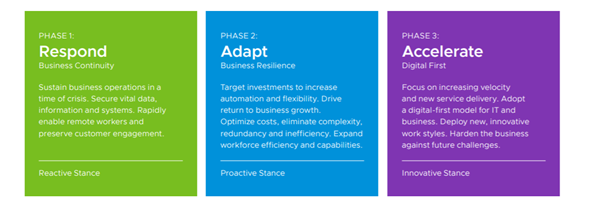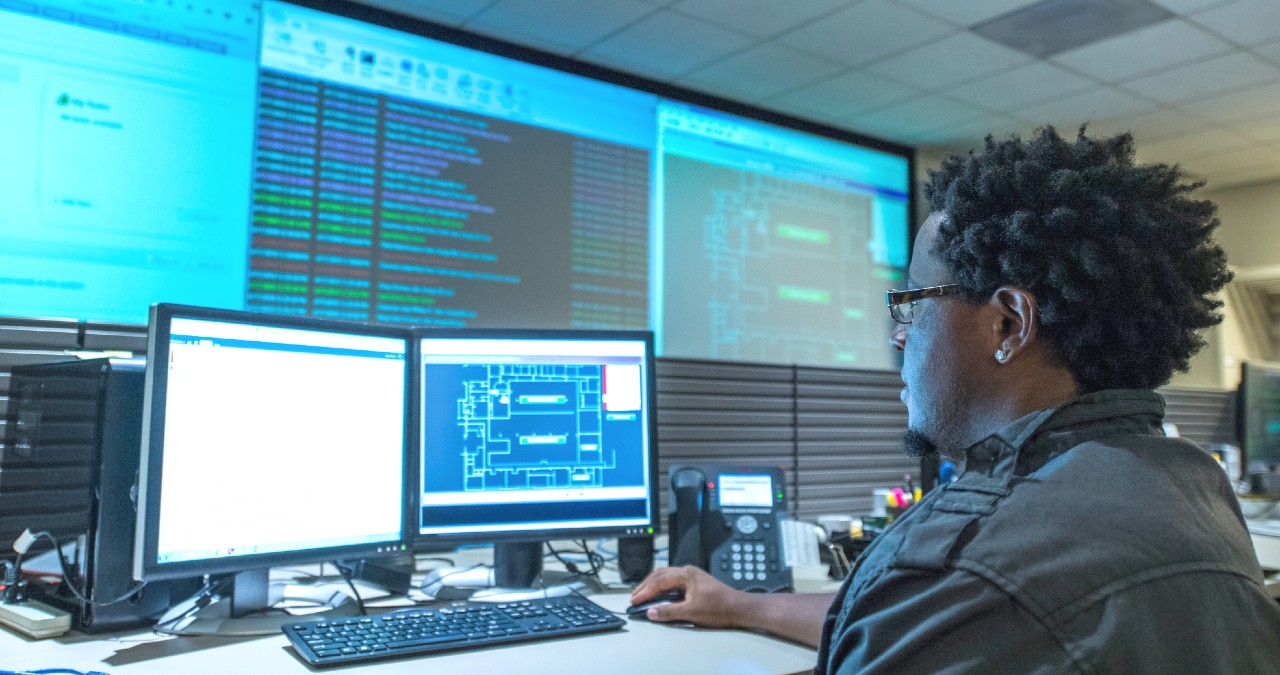Continued global economic uncertainty puts companies in the very difficult position of investing for positive impact with unknown recovery timetables. Consumer sentiment, business opportunities and global markets are all in flux. Yet, there is increasing urgency to advance digital strategies to support quickly evolving business requirements.
[caption id="attachment_23598" align="aligncenter" width="595"] 3 Phases to Drive Stability, Growth & Innovation in a Time of Crisis[/caption]
3 Phases to Drive Stability, Growth & Innovation in a Time of Crisis[/caption]
As they navigate down these three “future-ready” pathways, leaders increasingly recognize the critical need for cloud-native applications supported by next-gen infrastructure. This is particularly relevant in our current world, where the app experience is often the only experience.
It’s these applications that are delivering new insights and forging new relationships with customers while redefining markets for today’s reality. And it’s these essential applications that are key to a return to resiliency and growth for every business.
Apps at the Heart of Business
Organizations will be measured on how fast they can change course during unanticipated market dynamics or global events. That’s why digital foundation technologies are so important. And so is the innovation required to support evolving business use cases, customer demands and technical requirements.
“Organizations’ application needs over the past few decades haven't changed—the speed of delivery, performance, availability and security—but pretty much everything else has: the apps and the infrastructure delivering those apps,” said Kit Colbert, cloud platform vice president and CTO for VMware.
Colbert pointed to rapid cloud adoption and the transformation of monolithic apps into cloud-native models. He said modern businesses drive modern apps, but modern apps also drive modern infrastructure.
Colbert shared three key challenges facing IT teams today:
- Highly distributed cloud-native and telco 5G apps require more network bandwidth, which strains existing systems.
- Data-centric, machine-learning applications tax core CPUs, needing more cycles.
- Distributed multi-cloud and hybrid applications break traditional perimeter security models, increasing risk profiles.
Each of these increasingly in-demand apps has different requirements of the underlying infrastructure. And while it’s possible to meet these needs today, it’s expensive and operationally burdensome. The introduction of new specialized systems requires unique hardware, teams and processes to run the new stack.
That’s why modern apps need modern, software-defined infrastructure that delivers seamless, secure and reliable access to users—no matter where they’re located. And as organizations embrace emerging technologies such as GPU and NIC hardware accelerators to ease burdens, they need automated operations to reduce complexity and resourcing constraints.
It’s abundantly clear that modern business will run on next-generation apps. But next gen-apps require next-generation IT infrastructure. Experts like Colbert agree that the best way forward is through modern infrastructure that ensures simplicity, performance and security at low TCO. VMware unveiled Project Monterey to meet this urgent need.
Innovation Spotlight: Project Monterey
Project Monterey enables organizations to deploy modern, cloud-native and highly data-intensive apps on current investments—simply and cost-effectively. The solution also helps IT deliver insights without introducing complexity that compromises security.
“Project Monterey will ensure that VMware Cloud Foundation can be the right platform for any application—and especially modern ones,” said Colbert.
The solution embraces SmartNICs, a network adapter that offloads processing tasks normally handled by a server CPU. This will enable maximum performance, simplified operations and zero-trust security across all locations—in the data center, at the edge, in the cloud, in a telco environment or anywhere else.
And leading-edge companies are building SmartNIC innovation into future-ready data center strategies.
“At Equinix, our investments in SmartNIC and related proximity networking technology form an essential part of our global, interconnected infrastructure strategy. We’re excited about VMware’s Project Monterey to deliver security and performance for next-generation applications, while simultaneously unifying infrastructure and operations for our customers,” said Lance Weaver, vice president, research and incubation, Equinix.
“Project Monterey is another giant step on our modern apps journey,” wrote Colbert. “We believe Project Monterey will lower TCO—a big win for cost-constrained organizations. It will also improve security, while providing many new capabilities, such as support for bare metal.”
Key Takeaways
As business and consumer demands continue to evolve, leading organizations are ensuring applications and infrastructure keep pace:
- With future-ready solutions to help organizations respond quickly to a crisis, adapt to a new reality and accelerate innovation.
- Modern, flexible applications and infrastructure for the greatest agility.
- And the introduction of a redefined hybrid architecture for a new generation of applications.

